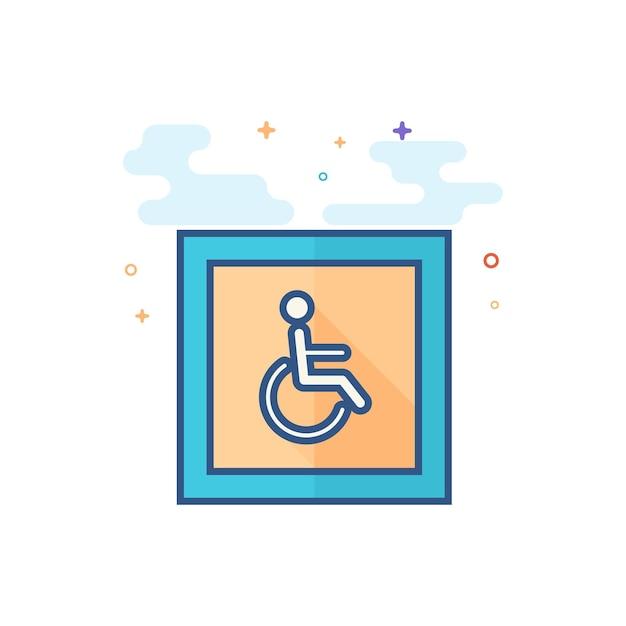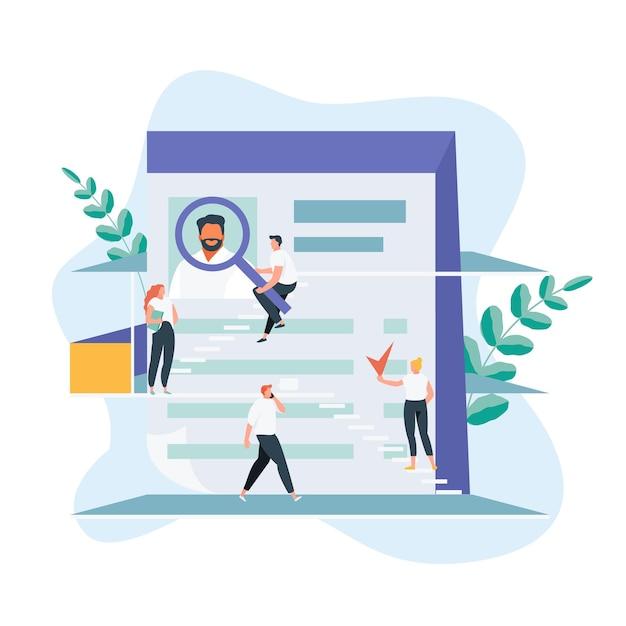The traditional hiring process can often be time-consuming and subjective, leaving both employers and candidates frustrated. But what if there was a way to predict the future success of a candidate right from the start? Enter predictive hiring, a method that utilizes data-driven techniques to identify the best fit for a job position.
In this blog post, we will dive into the concept of predictive hiring and explore how it works. We will also discuss the five-step hiring process and provide tips on how to pass a predictive hire interview. So, whether you’re a job seeker or an employer looking to streamline your hiring process, this post will give you valuable insights into the world of predictive hiring.
Predictive Hiring: Finding the Perfect Fit
Why Predictive Hiring Matters
In today’s competitive job market, finding the right candidate for a position can be like searching for a needle in a haystack. That’s where predictive hiring steps in, helping companies make data-driven decisions to identify the perfect fit for their team. So, how does it work?
The Power of Data
Using advanced algorithms and machine learning, predictive hiring analyzes vast amounts of data to predict a candidate’s job performance and likelihood of success. It goes beyond a simple resume scan or a gut feeling during an interview. By leveraging historical data from successful employees and matching it with the qualifications and attributes of candidates, recruiters can make more informed hiring decisions.
The Quest for the Holy Grail
Gone are the days of relying solely on interviews and references to make hiring decisions. With predictive hiring, companies can optimize their recruitment process to identify top-performing individuals who align with their organizational goals and values. It’s like finding the Holy Grail of hiring, but with data instead of medieval legends.
Breaking the Mold
Predictive hiring disrupts traditional hiring practices. No longer are recruiters bound by biases or subjective judgments. Instead, they can rely on objective data analysis to identify both diamonds in the rough and those candidates who may not fit the role as well as initially expected. It’s a game-changer that opens up new opportunities for both employers and job seekers.
Efficiency and Cost Savings
By using predictive hiring, companies can streamline their recruitment process, reducing time spent on reviewing hundreds of resumes and conducting multiple interviews. This not only saves valuable time but also cuts down costs associated with a lengthy hiring process. It’s a win-win situation for companies and candidates alike.
Overcoming Challenges
While predictive hiring offers significant advantages, it is not without its challenges. Data privacy, ethical considerations, and technological limitations are some of the hurdles that companies need to navigate. Nonetheless, as technology and methodologies evolve, these challenges are being addressed to make predictive hiring more reliable and effective.
The Future of Hiring
As technology continues to advance, predictive hiring will play an increasingly crucial role in finding the right talent. By leveraging data-driven insights, companies can optimize their hiring processes and build stronger, more diverse teams. So, embrace the power of predictive hiring and say goodbye to the outdated methods of the past.
Now that we’ve covered the basics, let’s dive deeper into the mechanics of predictive hiring and explore the different methods and tools used in the process. Stay tuned for the next exciting section!
Production Interview: Simplifying the Hiring Process
Understanding the Production Interview
When it comes to finding the right candidates for a job, conducting a production interview can be a game-changer. This step in the hiring process allows employers to truly gauge a candidate’s skills, experience, and suitability for a specific role. But what exactly does the production interview entail? Let’s break it down.
The First Impression
Much like in any other interview, candidates participating in a production interview are usually nervous and eager to make a good impression. As an employer, it’s essential to create a welcoming and comfortable environment to help them showcase their true potential. Remember, the more at ease a candidate feels, the more genuine their responses and the clearer the picture you’ll have of their abilities.
Testing the Waters
The primary purpose of a production interview is to assess a candidate’s qualifications and suitability for the role. The interview itself aims to determine if the candidate possesses the necessary skills, experience, and mindset required to excel in a production role.
Showcasing Skills
One of the most critical aspects of a production interview is evaluating a candidate’s skills. The interviewee may be asked to solve a problem, perform a task, or present a portfolio showcasing their prior work. This hands-on approach allows employers to directly observe the candidate’s abilities and make an informed decision.
Assessing Prior Experience
While skills are essential, prior experience can provide valuable insights into a candidate’s adaptability and familiarity with the demands of a production role. Delving into their previous work can help employers understand a potential employee’s strengths, weaknesses, and areas where they may need guidance or additional training.
Beyond the Résumé
The production interview enables employers to look beyond the résumé and evaluate a candidate’s personality and cultural fit within the organization. A good fit can foster a positive work environment and improve overall team dynamics.
As an employer, the production interview is your opportunity to find the perfect candidate who not only possesses the necessary skills but also fits seamlessly into your company’s culture. By focusing on showcasing skills and assessing prior experience, you can make a hiring decision that sets your team up for success. So, gear up and get ready to conduct a production interview that delivers excellent results!
What Does Predictive Work Mean
Predictive work is much like having a crystal ball that gives you a sneak peek into the future. It’s all about using data and statistical analysis to make informed decisions and predictions about various aspects of your work, especially when it comes to hiring the right people. But what exactly does predictive work mean? Let’s dive in and find out!
Understanding the Power of Predictive Work
Predictive work allows you to go beyond the traditional methods of hiring. Instead of relying solely on resumes, interviews, and gut feelings, it takes a more data-driven approach to identify the candidates who are most likely to succeed in a particular role. By analyzing historical data and using algorithms, predictive work helps you make more accurate and objective predictions about a candidate’s potential performance.
Unleashing the Magic of Algorithms
At the heart of predictive work lies a powerful tool called algorithms. These algorithms are like secret formulas that crunch the numbers and analyze various data points to find patterns and correlations. Imagine them as your own personal Sherlock Holmes, sifting through the clues to uncover hidden insights. By examining factors such as past job performance, educational background, and even social media activity, algorithms can paint a detailed picture of a candidate’s suitability for a role.
The Benefits of Predictive Hiring
Predictive work is not just a fancy concept; it can have some tangible benefits for your organization. First and foremost, it helps you make more informed hiring decisions, reducing the chances of costly mistakes. With predictive work, you can also identify high-potential candidates who may have been overlooked in a traditional hiring process.
Furthermore, by focusing on the traits and skills that actually matter for a specific role, predictive work can help you build a more diverse and inclusive workforce. This, in turn, leads to enhanced creativity, improved problem-solving, and a fresh perspective that can drive innovation within your organization.
Tackling the Skepticism
Now, you might be thinking, “Is predictive work really that accurate? Can algorithms really predict human behavior?” Well, the answer is not a simple yes or no. While predictive work is undoubtedly a powerful tool, it’s important to take it with a grain of salt. Human behavior is complex, and algorithms can only go so far in capturing its nuances.
That’s why it’s crucial to combine the power of predictive work with human judgment. The data and insights provided by predictive algorithms should be used as a guiding star rather than the sole determining factor. After all, a successful hire is not just about ticking off boxes on a checklist; it’s about finding someone who fits in with your organization’s culture and values.
So, what does predictive work mean? It’s the art of using data, statistical analysis, and algorithms to make better hiring decisions. By harnessing the power of predictive work, you can unlock a whole new level of precision and efficiency in your hiring process. Just remember, while algorithms can be powerful allies, they should always be complemented with human judgment to ensure the perfect match between candidates and your organization.
How Do You Predict Hiring Needs
Predicting hiring needs can be a daunting task for any business. After all, trying to foresee how many employees you’ll need in the future is like trying to predict the weather – it’s often unpredictable! However, with the power of data and a little bit of planning, you can increase your chances of making accurate hiring predictions. In this section, we’ll explore some strategies to help you navigate the murky waters of hiring needs.
Analyzing Historical Data
One effective way to predict your hiring needs is by analyzing your historical data. Take a look at your company’s past growth patterns and identify any trends. Have there been specific months or seasons where your business experienced a surge in activity? Has there been a consistent increase in demand over the years? By identifying these patterns, you can make more informed decisions about when and how many people you might need to hire in the future.
Assessing Future Projects and Goals
Consider your company’s upcoming projects and goals. Are you planning to expand into new territories? Launch a new product? Enter into a partnership? Each of these initiatives can have a significant impact on your hiring needs. Take the time to evaluate your business roadmap and identify potential areas of growth and expansion. This will help you align your hiring strategy with your long-term goals.
Collaboration with Department Heads
Your department heads are a goldmine of knowledge when it comes to predicting hiring needs. They have a pulse on their respective teams and can provide valuable insights into their workload, upcoming projects, and any potential skill gaps. Regularly meeting with your department heads to discuss their team’s needs can provide you with real-time information that will help in your hiring decision-making process.
Utilizing Workforce Management Software
Investing in workforce management software can greatly simplify the process of predicting hiring needs. These tools can provide you with real-time analytics on your workforce, including employee productivity, turnover rates, and future workforce projections. By leveraging the power of technology, you can make more data-driven decisions when it comes to your hiring strategy.
Stay Adaptive
Finally, it’s important to remain adaptive and open to change. Predicting hiring needs is not a one-time exercise; it requires constant monitoring and adjustment. As your business evolves, so will your hiring needs. Being agile and ready to adapt will ensure that you stay ahead in the hiring game.
Predicting hiring needs may not be an exact science, but with the right strategies and tools in place, you can increase your chances of making more accurate hiring predictions. By analyzing historical data, assessing future projects, collaborating with department heads, utilizing workforce management software, and staying adaptive, you’ll be well-equipped to handle your hiring needs like a pro. So, put on your forecasting hat and get ready to build the dream team your business deserves!
What is the 5 Step Hiring Process
So you’re thinking of implementing predictive hiring, but you’re not exactly sure what it entails? Fear not! Let’s break it down into a simple and straightforward 5-step process:
Step 1: Identifying the Job Requirements
First things first, you need to clearly define the job requirements. What skills and qualifications are necessary for success in this role? Take the time to understand the key responsibilities and competencies needed.
Step 2: Crafting an Engaging Job Post
Now that you know what you’re looking for, it’s time to create a job post that grabs the attention of top candidates. Use language that’s exciting and enticing, highlighting the unique aspects of your company and the position itself. Remember, you want to stand out from the competition!
Step 3: Screening Resumes and Applications
With your job post out in the world, it’s time to start reviewing resumes and applications. This can be an overwhelming task, but fear not! By utilizing predictive hiring tools, you can automatically prioritize and filter candidates based on their qualifications and fit for the role.
Step 4: Conducting Interviews
Now comes the fun part – the interviews! This is your chance to get to know the candidates on a deeper level. Prepare a series of questions that will help you assess their skills, experience, and cultural fit. Remember, it’s not just about finding someone who can do the job, but someone who will thrive in your company’s environment.
Step 5: Making the Final Decision
After conducting interviews and gathering all the necessary information, it’s time to make the final decision. Consider all the factors, including the predictive hiring data you’ve gathered throughout the process. Trust your instincts, but also rely on the objective insights provided by the predictive hiring software.
And there you have it – a comprehensive 5-step hiring process! By following these steps and incorporating predictive hiring techniques, you can improve your chances of finding the perfect candidate for your company. Good luck!
How to Ace a Predictive Hiring Interview
So, you’ve found a job opening that seems like the perfect fit for you, and you managed to secure an interview. Congratulations! But there’s just one catch – it’s a predictive hiring interview. Don’t panic! With the right approach, you can breeze through this type of interview and increase your chances of landing the job. Here are some tips to help you prepare and excel in your predictive hiring interview.
Understand the Predictive Hiring Process
Before diving into the interview, it’s essential to understand what predictive hiring is all about. Predictive hiring is a method that uses data and analytics to assess a candidate’s potential fit for a particular role. Employers use various tools, such as assessments, personality tests, and simulations, to predict a candidate’s future job performance. This approach aims to reduce bias and increase the accuracy of the hiring process.
Research the Company and Job Requirements
Just like any other interview, it’s crucial to thoroughly research the company and the specific job requirements. Familiarize yourself with the company’s values, culture, and mission. Look for information on recent projects, achievements, and any industry trends that may affect the role you’re applying for. By demonstrating your knowledge, you’ll show the interviewer that you are genuinely interested in the position.
Prepare for Behavioral and Situational Questions
Predictive hiring interviews often involve behavioral and situational questions that assess how you respond in various scenarios. Brush up on your past experiences and think of specific examples that highlight your skills, achievements, and problem-solving abilities. Practice framing your answers in the STAR format (Situation, Task, Action, Result) to provide a structured response that showcases your abilities effectively.
Showcase Your Adaptability and Learning Agility
Predictive hiring often places a strong emphasis on adaptability and learning agility. Employers want to see how quickly and effectively you can learn new skills and navigate unfamiliar situations. Highlight instances in your past where you successfully adapted to change, learned new software or technologies, or took on challenging projects that required you to step out of your comfort zone. Showcasing your willingness to grow and develop will set you apart from other candidates.
Demonstrate Your Problem-solving Skills
Problem-solving is a crucial skill that employers look for in predictive hiring interviews. Be prepared to discuss real-life examples where you identified an issue, developed a solution, and implemented it successfully. Emphasize your ability to think critically, analyze data, and collaborate with others to solve complex problems. Employers want to see that you can approach challenges with a proactive and strategic mindset.
While predictive hiring interviews may seem daunting, they offer a unique opportunity to showcase your skills and potential. By understanding the process, researching the company, preparing for behavioral questions, highlighting your adaptability, and demonstrating your problem-solving skills, you’ll be setting yourself up for success. Now go out there, show them what you’re made of, and secure that job!
Note: Remember to tailor your answers to the specific job and company you’re applying to. Practice beforehand to ensure you can confidently answer any questions thrown your way. Good luck!



